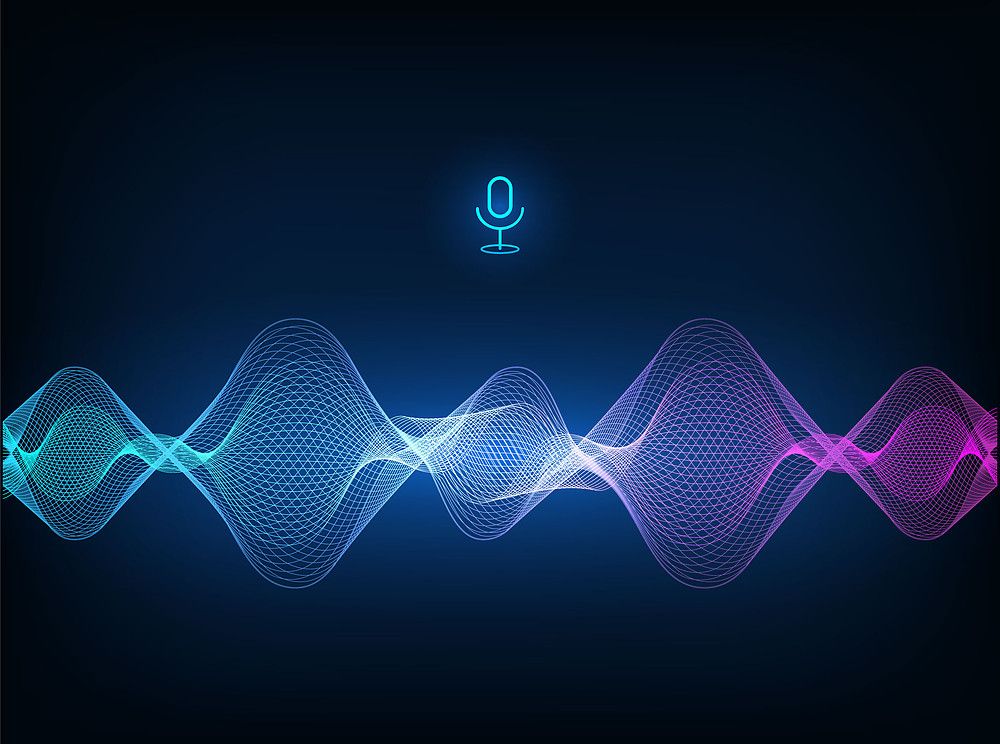AI-Powered Text-to-Speech: Transforming Accessibility in 2024

Converting Brain Waves to Speech: The Future of AI in Neural Prosthetics
The advent of AI in neural prosthetics signals a new dawn for individuals with speech impairments, heralding technologies that can directly transform brain waves into speech. This development, evolving at institutions like Radboud University Nijmegen, showcases the intersection of neuroscience and artificial intelligence where machines not only understand but also articulate complex human thoughts. For experts in AI-driven text to speech (TTS) systems, particularly those adept in API usage and development across Python, Java, and Javascript, the innovation presents a remarkable opportunity to advance communication aids. Radboud University's breakthrough achieves this by decoding neural signals at unprecedented accuracy levels (92 to 100%) using a blend of brain implants and sophisticated AI algorithms, enhancing the expressive capabilities of those who have lost their natural speech.
The research underscores the potential for AI to redefine the boundaries of how we interact with technology, particularly in translating internal thoughts to external speech. The high accuracy achieved in these studies feeds into the vision of creating seamless, intuitive communication interfaces that can empower speech-impaired individuals with a new voice. This leap in technology, facilitated by machine learning and deep neural networks, taps into the intricate fabric of neural pathways, offering a glimpse into what the future holds for TTS systems—creating solutions that are not just functional, but profoundly life-changing for users. It embodies the aspiration to merge the human cognitive experience with AI’s proficiency, delivering a voice as authentic and expressive as any natural speaker's.
| Topics | Discussions |
|---|---|
| Breakthrough in Brain Signal Decoding | Discussing the landmark achievement in translating brain activity into spoken words through advanced AI and neural interfaces. |
| Unlocking Speech Restoration Through AI Tech | Exploring how AI and machine learning are catalyzing the development of devices to restore speech in individuals with impairments. |
| Innovations in Neurotechnology | Analyzing the strides made in neurotech that pave the way for new communication aids using AI-driven speech synthesis. |
| Technical Guides for Unreal Speech API | Instructions and guides on utilizing Unreal Speech API to incorporate realistic speech synthesis into software projects. |
| Optimizing User Experience: Best Practices in TTS Applications | Observing the dynamic progress and anticipated future trends in text-to-speech technology as influenced by current AI innovations. |
| Common Questions Re: Realistic Voice TTS | Addressing the most pressing inquiries concerning the application, quality, and advancements of AI in text-to-speech systems. |
Breakthrough in Brain Signal Decoding
The integration of AI into neural prosthetics marks an era of breakthroughs in brain signal decoding, which is becoming instrumental in the realm of speech synthesis technologies. This advancement is not merely a technological stride; it is a beacon of hope for those who have lost their ability to speak. As we delve deeper into the core terminologies that underpin these innovations, it's important to acquaint ourselves with the language that defines this transformative journey from brain wave to spoken word. Whether you are a university researcher, software engineer, or developer immersed in AI text to speech (TTS) systems, these key terms will provide you with a foundational understanding of the current state of neural prosthetic technology.
Neural Prosthetics: Biomedical devices that interface with the nervous system to replace or augment damaged sensory or motor functions, often involving direct neural signal processing.
AI (Artificial Intelligence): The simulation of human cognitive functions by machines, particularly computer systems, which is crucial in interpreting and converting brain signals into speech.
Brain Signal Decoding: The process of translating neural impulses into comprehensible output, such as speech, using algorithms and AI to interpret the brain's complex language.
TTS (Text-to-Speech): A technology that synthesizes spoken word from text, which in the context of neural decoding, may involve transforming decoded brain signals into audible language.
Machine Learning Algorithms: Computational algorithms that enable systems to learn from and make predictions or decisions based on data, a core component of modern AI speech synthesis.
Speech Synthesis: The artificial production of human speech by computers, encompassing a range of AI technologies that generate speech that is natural and intelligible.
Accuracy of Prediction: In AI systems, the degree to which the predicted output matches the intended communication or behavior, which is critical for the efficacy of prosthetic speech devices.

Unlocking Speech Restoration Through AI Tech
On August 28, 2023, Radboud University Nijmegen and UMC Utrecht unveiled a study that marked a significant milestone in speech restoration technology. Featured in ScienceDaily, the researchers showcased their success in using AI and brain implants to convert neural signals into coherent and audible speech—a leap forward for individuals with speech impairments. The study's high prediction accuracy of up to 100% signifies a breakthrough that not only underscores the potential of these devices in aiding communication but also demonstrates the precise convergence of neuroscience and AI.
The incorporation of brain implants with advanced machine learning algorithms in this study suggests a complex yet nuanced approach to capturing and decoding neural activity. The resulting system, which allows the accurate prediction of spoken words, carries profound implications for those needing assistive speech technologies. Although the full methodology and AI system details remain undisclosed, their potency in restoring verbal communication paves the way for a new paradigm in delivering aid to those affected by speech loss.
Given the intricate nature of neurotechnology advancements, the techniques employed to achieve such levels of accuracy likely involve cutting-edge signal processing and sophisticated language modeling. Establishing a connection between brain activity and processed speech articulates a future where the fidelity of BCIs and their clinical applications can provide near-natural communicative abilities. The collaboration between the university and medical center evident in this study fosters a multidisciplinary approach, merging theory and practice to enhance and humanize the capabilities of prosthetic speech devices.
Innovations in Neurotechnology
The integration of AI in neurotechnology has spearheaded innovations that are profoundly impacting the field of medical science and beyond. The recent advancements in neural prosthetics, specifically in the domain of speech restoration, are a testament to the strides researchers have made. Studies like the one from Radboud University Nijmegen and UMC Utrecht demonstrate the incredible possibilities that come with the ability to directly translate brain signals into spoken words, opening up new avenues for those with speech impairments to communicate once again.
Developments in AI text to speech (TTS) are not just about synthesizing words that are audible; they encompass the creation of speech that embodies the natural fluidity and expressiveness of human language. By utilizing machine learning (ML) algorithms and deep neural networks (DNNs), researchers can decode the complex patterns of neural activity that represent speech intentions. This is a significant leap in creating more inclusive technologies that can understand and execute human-like spoken language.
At the core of these breakthroughs are the AI systems capable of not just capturing overt speech but also subtler aspects like tone, cadence, and emotion, which combine to convey a speaker’s intent. The rigorous design and optimization of these systems underscore their importance in the wider adoption of neural interfaces for speech synthesis. As this technology continues to mature, it promises substantial enhancements in the quality of life for individuals who rely on these vital communication aids.
Technical Guides for Unreal Speech API
Setting Up Unreal Speech API in Python
For Python developers, the Unreal Speech API provides a straightforward endpoint for converting text to speech. In the following guide, we'll use the 'requests' module to interact with the '/stream' endpoint. The synchronous response from this endpoint ensures developers can quickly incorporate TTS capabilities into their applications. Below is a Python code sample that details how to execute this task:
import requests
Provide your Unreal Speech API Key
headers = {'Authorization': 'Bearer YOUR_API_KEY'}
Define your text and desired voice settings
payload = {
'Text': 'Insert your text here',
'VoiceId': 'Select a voice ID such as Scarlett, Dan, Liv, Will, Amy',
'Bitrate': '192k', # Options: 320k, 256k, 192k
'Speed': '0', # Range from -1.0 to 1.0
'Pitch': '1', # Range from 0.5 to 1.5
'Codec': 'libmp3lame' # or 'pcm_mulaw'
}
Send a POST request to the '/stream' endpoint
response = requests.post('https://api.v6.unrealspeech.com/stream', headers=headers, json=payload)
Write the audio data to an MP3 file if the request is successful
if response.ok:
with open('synthesized_speech.mp3', 'wb') as file:
file.write(response.content)
else:
print(f'Error occurred: {response.status_code}')
Architecting AI Speech with Unreal API
Integration of Unreal Speech API into JavaScript involves using an HTTP client like 'axios' to send POST requests to the '/stream' endpoint. The below Node.js example demonstrates how to initiate the request and handle the streamed audio data:
const axios = require('axios');
const fs = require('fs');
const headers = {
'Authorization': 'Bearer YOUR_API_KEY',
};
const data = {
'Text': '<YOUR_TEXT>', // Up to 1,000 characters
'VoiceId': '<VOICE_ID>', // Scarlett, Dan, Liv, Will, Amy
'Bitrate': '192k', // 320k, 256k, 192k, ...
'Speed': '0', // -1.0 to 1.0
'Pitch': '1', // 0.5 to 1.5
'Codec': 'libmp3lame', // libmp3lame or pcm_mulaw
};
axios({
method: 'post',
url: 'https://api.v6.unrealspeech.com/stream',
headers: headers,
data: data,
responseType: 'stream'
}).then(function (response) {
response.data.pipe(fs.createWriteStream('audio.mp3'))
});
Both examples provide developers with a comprehensive understanding of integrating the Unreal Speech API for generating realistic speech in various TTS applications.
Optimizing User Experience: Best Practices in TTS Applications
Unreal Speech's API is revolutionizing text-to-speech technology by significantly reducing costs and cultivating advancements that are beneficial across a multitude of professional fields. Academic researchers can capitalize on the cost-efficiency and high precision of Unreal Speech to conduct comprehensive studies involving natural language processing or cognitive assessments that require realistic speech simulation. The potential savings and high-quality output provide an essential tool for researchers who may otherwise have limited resources for such technologies.
Software engineers seeking to embed TTS into applications stand to gain from the API's rapid response rates and robust performance. Unreal Speech is particularly advantageous for developers working on interactive applications, where the integration of responsive and natural-sounding TTS can greatly enhance user experience. With up to 625 million characters available monthly under the Enterprise Plan, large-scale projects become more manageable and economically feasible.
Game developers can leverage the Unreal Speech API to bring characters to life, creating immersive worlds with voices that carry emotional depth, varying intonations, and clear articulations. This enhanced realism captures players' attention and can significantly affect the gaming experience. For educators, the API's capacity for voice customization and the forthcoming multilingual support mean they can tailor educational materials to a diverse student audience. The ability to create studio-quality voiceovers for educational videos or podcasts seamlessly extends learning beyond traditional textbooks and classrooms, facilitating engaging and accessible content for all learners.
Common Questions Re: Realistic Voice TTS
What Qualifies as the Most Realistic Sounding Text-to-Speech?
The most realistic sounding text-to-speech models are those that can replicate the nuances of human speech, including the correct intonations, pitches, emotions, and cadences that convey the intended message with clarity and authenticity. This is typically achieved through the use of advanced deep learning techniques and extensive training data.
Finding the Optimum in Realistic AI Voice Technology
Identifying the best in realistic AI voice technology involves evaluating systems that deliver high-quality, lifelike vocal output, and can be customized extensively to fit various contexts, accents, and languages, which may also include real-time adjustments to suit particular requirements.
Redefining Realism in Text-To-Speech: Practical Guidelines
Realism in text-to-speech is often redefined by ongoing advancements in AI. TTS systems that incorporate advanced speech recognition and synthesis algorithms, which are continually updated with recent linguistic data, manage to produce speech that's increasingly parallel to naturally occurring human speech patterns.